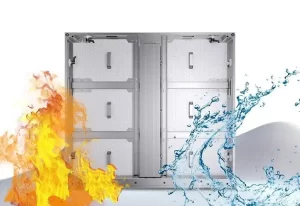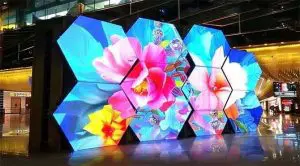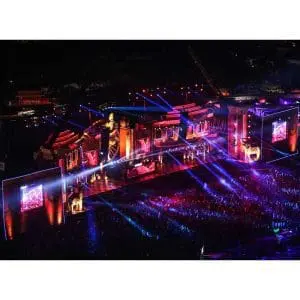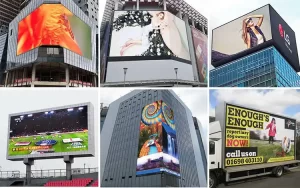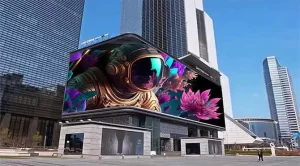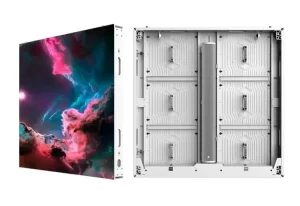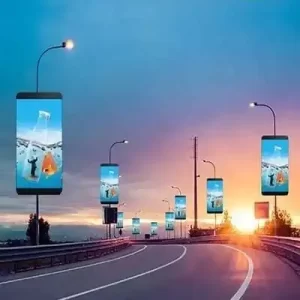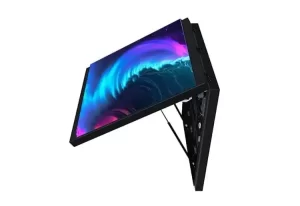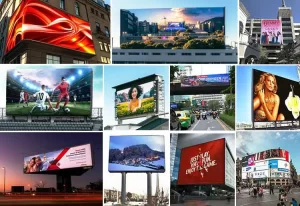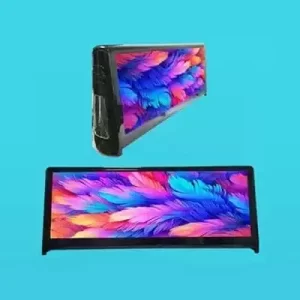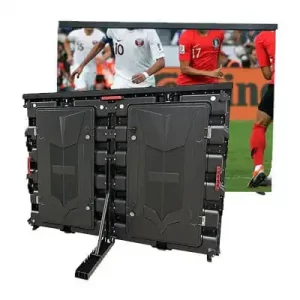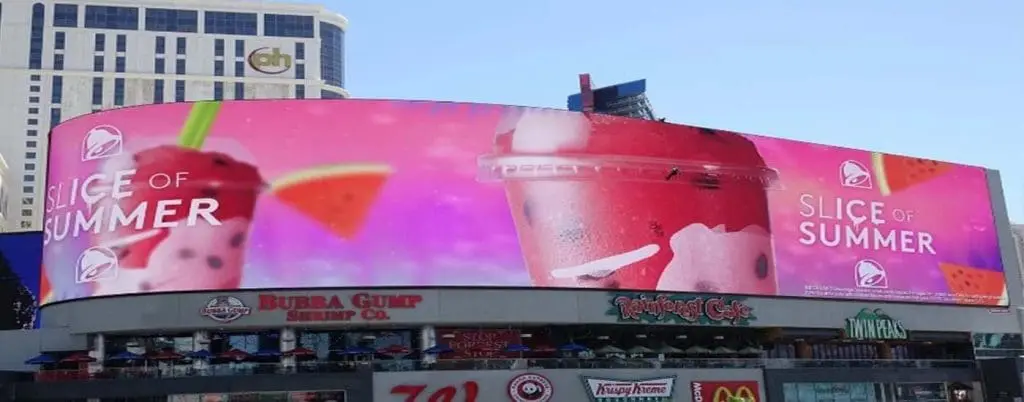
An LED advertising screen is a cutting-edge digital display used to showcase advertisements, promotions, and messages in both indoor and outdoor environments. These screens leverage light-emitting diode (LED) technology to deliver bright, high-resolution visuals that capture attention effectively, making them a popular choice for businesses, brands, and event organizers.
Key Features of LED Advertising Screens
- Dynamic Content:
- Displays videos, images, animations, and text.
- Supports real-time updates for advertising campaigns.
- High Brightness:
- Outdoor screens offer 5,000–10,000 nits, ensuring clear visibility even in direct sunlight.
- Indoor screens provide 800–1,200 nits, optimized for controlled lighting.
- Customizable Sizes:
- Modular panels allow screens to be adjusted to fit any space, from small retail signs to massive building facades.
- Durable and Weatherproof:
- Outdoor LED screens are IP65-rated, making them resistant to rain, dust, and extreme temperatures.
- Wide Viewing Angles:
- 140°–160° viewing angles ensure visibility from multiple perspectives.
- Energy Efficiency:
- Advanced LED technology reduces power consumption compared to traditional displays.
Applications of LED Advertising Screens
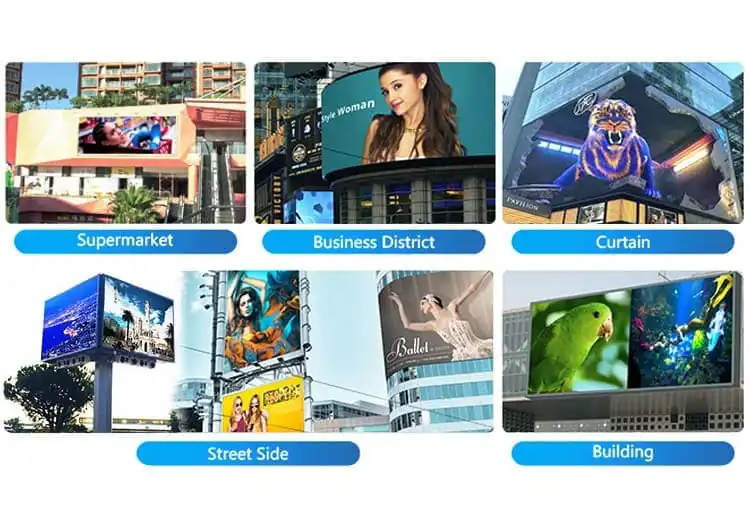
1. Outdoor Advertising
- Installed in high-traffic areas, such as highways, public squares, and city centers.
- Popular for billboards, building facades, and transportation hubs.
2. Indoor Advertising
- Used in shopping malls, airports, train stations, and retail stores.
- Ideal for high-resolution close-up visuals to engage customers.
3. Events and Live Shows
- Display sponsor ads, event schedules, and live video feeds during concerts, trade shows, or sports matches.
4. Corporate Branding
- Used in office lobbies, conference rooms, and building exteriors to promote company branding.
5. Smart Storefronts
- Transparent LED screens allow retailers to showcase promotions on their window displays without blocking visibility into the store.
Types of LED Advertising Screens
| Type |
Description |
| Outdoor LED Screens |
Weatherproof screens for outdoor advertising and large-scale branding projects. |
| Indoor LED Screens |
High-resolution displays for close-up visuals in malls, stores, or offices. |
| Transparent Screens |
Glass-mounted screens that transmit light while displaying vibrant content. |
| Curved LED Screens |
Flexible designs for curved surfaces and immersive visuals. |
| Mobile LED Screens |
Portable screens mounted on vehicles or trailers for events and campaigns. |
Technical Specifications
| Specification |
Details |
| Pixel Pitch |
P2.5–P10 (smaller pitch for higher resolution). |
| Brightness |
800–1,200 nits (indoor), 5,000–10,000 nits (outdoor). |
| Refresh Rate |
≥3840 Hz for smooth, flicker-free visuals. |
| Weatherproof Rating |
IP67 for outdoor use, IP54 for indoor use. |
| Viewing Angle |
140°–160° for maximum visibility. |
| Power Consumption |
300–800 W/m² depending on brightness and pixel pitch. |
| Lifespan |
50,000–100,000 hours of operation. |
| Control System |
Cloud-based or local systems for remote content updates. |
Cost of LED Advertising Screens
1. Cost Per Square Meter
| Pixel Pitch |
Use Case |
Cost per m² |
| P2.5 |
High-resolution (indoor) |
$1,000–$2,500 |
| P4 |
Medium viewing distance |
$900–$1,500 |
| P6 |
Outdoor advertising |
$700–$1,000 |
| P10 |
Long-distance viewing |
$500–$900 |
2. Example Cost Estimates
| Screen Size |
Use Case |
Estimated Cost |
| 10 m² (5 x 2 m) |
Small retail sign |
$10,000–$20,000 |
| 20 m² (10 x 2 m) |
Medium billboard |
$20,000–$30,000 |
| 50 m² (10 x 5 m) |
Large highway screen |
$50,000–$7,0000 |
| 100 m² (10 x 10 m) |
Urban advertising |
$100,000–$150,000 |
3. Additional Costs
- Steel Structure: $5,000–$50,000 depending on size and location.
- Installation: $10,000–$100,000 based on complexity.
- Control System: $2,000–$10,000 for content management software.
- Maintenance: 5%–10% of the total screen cost annually.
Benefits of LED Advertising Screens
1. High Impact Marketing
- Engages audiences with vibrant visuals, animations, and real-time content.
2. Revenue Generation
- Property owners can lease screen time to advertisers, creating a consistent revenue stream.
3. Versatile Applications
- Suitable for both indoor and outdoor environments, with customizable sizes and shapes.
4. Long-Term Investment
- Durable and energy-efficient, ensuring a high return on investment over time.
5. Sustainability
- Reduces reliance on printed materials, making it an eco-friendly advertising solution.
Successful Applications
- Times Square, New York
- Features some of the largest and most iconic LED screens in the world, showcasing global brands like Coca-Cola and Samsung.
- Shibuya Crossing, Tokyo
- Home to immersive 3D LED screens that captivate millions of pedestrians daily.
- Burj Khalifa, Dubai
- The building’s LED facade transforms into a massive advertising platform for brands and national events.
- Piccadilly Circus, London
- High-resolution LED billboards dominate this historic square, offering dynamic advertising space for major companies.












